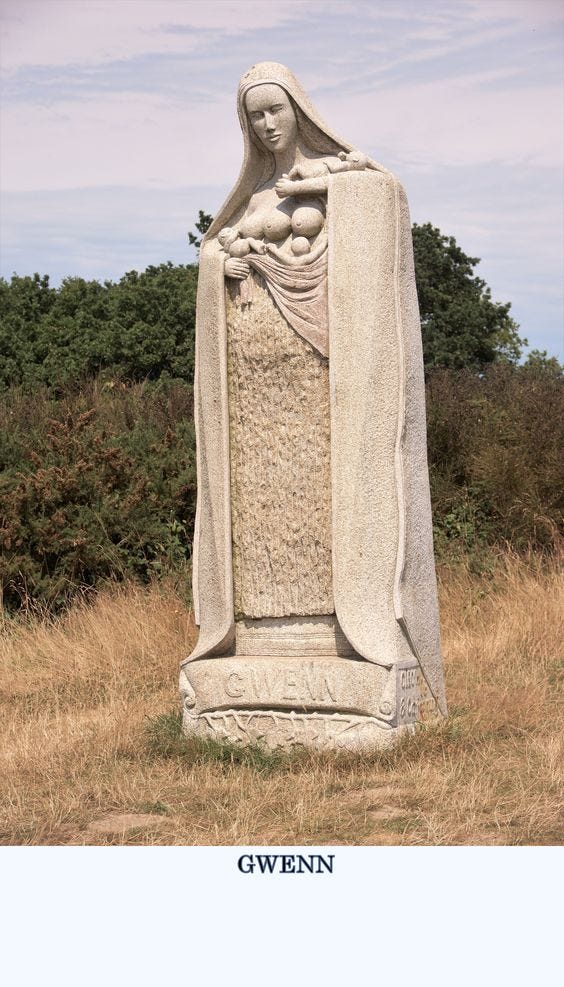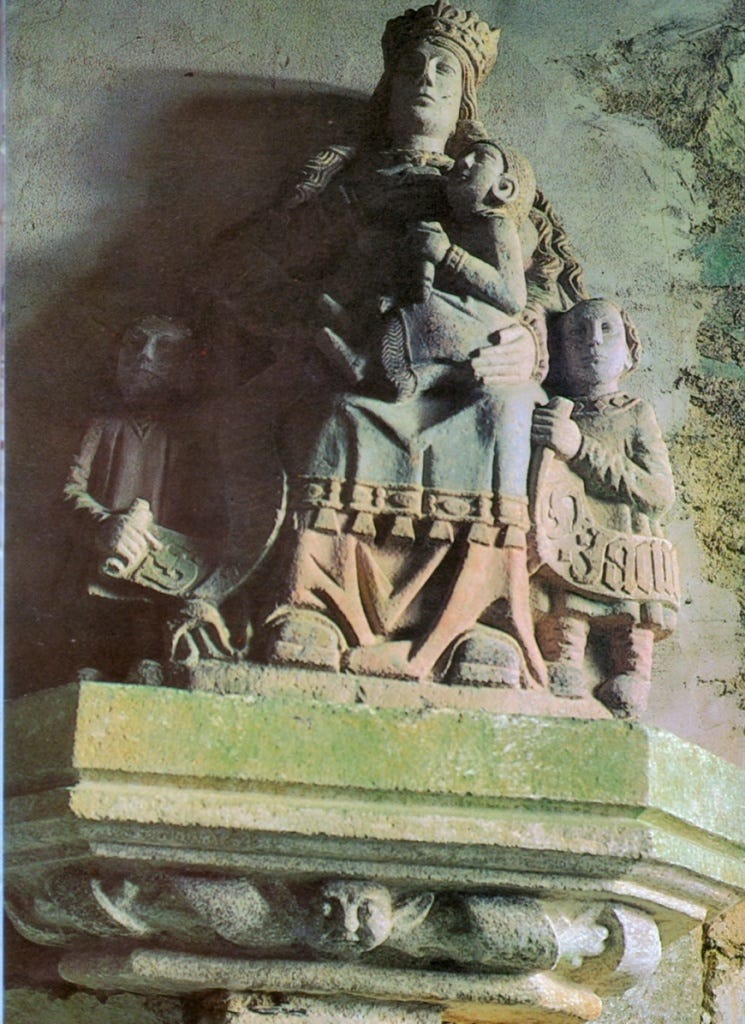On St. Gwen the White
Uncut Mountain Supply has a section of their online store dedicated to western saints. Out of interest, I was browsing this section, searching specifically for British or Celtic. I had no intention of purchasing a new icon, but browsing online stores like this can serve to interest one to a new and previously unknown saint. I opened the pages of four saints, but whereas the first three gave a full description of the saint’s life, the page for St. Gwen read “commemorated on June 1”. This description explained nothing about her, so I sought out more information about her life on the internet. It turns out, St. Gwen is a 5th or 6th century saint from Brittany, who as noted by Wikipedia is venerated for her “physical and spiritual fecundity”. She is also believed to have, and is often times depicted as having, three breasts. Now, thankfully, the Celtic Orthodox Church in Britain explains this away as a legend, as she bore triplets to her first husband, all of which became saints, and thus, in early depictions should would be cradling all three babies at once, nurturing them physically and spiritually. Thus, depicting her with three breasts could be seen as symbolic for the equal care she gave to her three children, and the great results such care ordained. Now, I do not believe the Celtic Orthodox Church in Britain is a canonical church, but their explanation and justification of St. Gwen seems to me to provide the only reasonable answer as to why a saint would be depicted as she was. This is of course unless we believe that God literally gave her a third breast, either in the womb or later in life.
The icon from Uncut Mountain Supply does not depict her breasts at all, and as mentioned before, is vague in describing how she came to be recognized as a saint in the Orthodox Church. Wikipedia states that she is venerated in Western Rite Orthodox churches, and locally by ROCOR in Australia. This is speculation on my part, but it seems that St. Gwen is an authentic saint of the Church, venerated locally before the Great Schism, however she wasn’t officially canonized until after the Schism by the Roman Catholic Church. Thus, all of the legends regarding her having three breasts are a misinterpretation of ancient iconography (referring to those icons which depict her holding her three sons), coupled with the desire of Renaissance artists to produce iconography and statuary that was more carnal in nature (for example the bare breasted Madonna, or nude statue of Christ). So, it is my hope that the depictions of St. Gwen as having three breasts was originally meant to by symbolic, but that this symbol was later on misinterpreted by western Catholic theologians, resulting in the legend of a “three breasted saint” being created.
Now it is not my intention to antagonize Catholics with this article. To put it briefly, there are many challenging aspects of the Christian faith which I have had to either come to an understanding of, or had to come to peace with. As hard as I may try, I cannot think of a theological justification for God giving a woman a third breast, as doing so would represent a perversion of the natural order. I believe God has cured those who existed in a state of natural/genetic perversion, be they St. Christopher the cynocephali, or the mermaid saint Lí Ban who died upon baptism. But we do not see examples of God mutating His creatures as a reward for their holiness. Furthermore, I do believe legends like this are dangerous. There is a concerted effort by those in Christian academia to have many of the lives of the saints be deemed mythological. In a way, I am doing this with St. Gwen, but since the depictions of her with three breasts are western and were never received in the east, I believe I am justified in rejecting later Catholic depictions of her and the beliefs concerning them. But I do maintain that it is deathly important to defend both the dignity and historicity of the lives of the saints and the martyrologies. I should hope that I do not need to go into detail as to why, but in brief it is the saints and martyrs who are the lived and living embodiment of the Church on earth. It is they who best represent and guide us in the faith as we follow them as they followed Christ (1 Corinthians 11: 1), and we unite to them as they are united to Christ. There already exists within Christianity a number of stumbling blocks which make the task of evangelizing difficult. We do not need to invent for ourselves more of these stumbling blocks, especially those which to an unlearned eye appear pagan, as have the legends surrounding St. Gwen been described.






